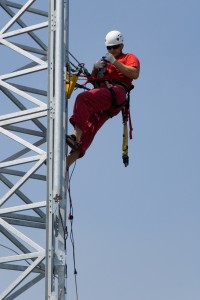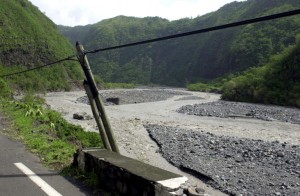Aug 2014
 For any WISP, having a robust, fast and high capacity distribution infrastructure between sites is one of the key factors in getting clients the full speeds they expect with predictable latency and reliability.
For any WISP, having a robust, fast and high capacity distribution infrastructure between sites is one of the key factors in getting clients the full speeds they expect with predictable latency and reliability.
Many WISPs start by building a multi-point access point on their first tower, and then install a number of clients on that access point. This is a typical and ideal configuration.
Often at some point later, there is a need to install another AP at one of those client’s locations to act as a repeater to additional clients. Using clients as repeaters can be a good, low cost way to expand coverage and reach additional clients. There are legal and business considerations with this, but for this article I will focus on the technical considerations.
Many WISPs will simply connect another access point at the client location, using the existing connection as the feed for that AP. In some cases, simply enabling AP-Repeater mode can also look like a quick and inexpensive way to get service to more subscribers. These two techniques have some significant challenges and are not suited to professional grade services that will then be resold. These features were included by manufacturers for hobbyists to use as experimental or home-use features only.
What’s wrong with AP-Repeater mode?
Every time an AP-Repeater is used, speed and capacity for all the customers on those access points are cut in half. Some might say “No big deal, I only have a few users out there, I can afford to reduce speeds”, but the issue is much larger than that. Here’s how AP-Repeater mode works:
AP#1 is where the Internet feed is supplied, it has 20 subscribers on it, one of them is a
Author: Scott Armstrong

